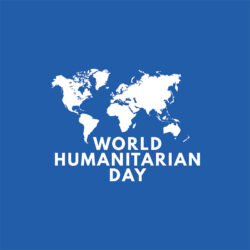World Humanitarian Day – The Health of Independent Farmers

By Christopher Harvey
As the world continues to increase in population, so does the need for basic resources. In first world countries, food can appear infinite. According to UN’s Food and Agriculture Organization (FAO), the world produced approximately four billion metric tons of food, for a world population of 7.75 billion (FAO, 2020). If divided equally among the world’s population, this comes out to be roughly one thousand pounds of food per person in 2020, despite the dampening effects of the Covid-19 pandemic. In essence, the world produces vast quantities of world, which we in first world countries often take for granted. Nutrition aside, for most living in the first world, acquiring the calories necessary for survival is not a problem. As we all know, for most Americans, there is a problem with too many calories.
To those of us with food security, food can seem as plentiful as water. In the US, I’ve heard folks say that, while it is technically possible for agricultural production to not meet caloric needs of the American people, the likelihood is so remote that it is not worth considering. While this statement is hyperbole, I think many of us living in the West can understand why some may have such a misguided notion. So much of our culture reinforces this notion. Several generations in this country have grown never to know hunger. While this notion can appear benign, it illustrates the profound disconnect between food production, and the people that consume what is produced. In two hundreds’ years time, we went from a majority of people involved with agricultural production, to only a small percentage.
I help run a volunteer clinic in Pinckney, Michigan, which services a sizable community of underinsured independent farmers. Michigan has a strong legacy of independent family farms. In my years as an RN, I have had the opportunity to hear their plight. In essence, many of these farmers are struggling with market consolidation, which squeeze their margins. These families struggle financially, and for one reason or another, have not had regular relationships with the medical community. There is a culture of fierce independence. Many of these individuals take pride in their independence. Having come from a family of farmers, I understand this notion.
Unfortunately, this independent-mindedness can come with unintended health consequences. Farmers will present to clinic once their chronic health concerns begin to impact their ability to independently perform the tasks necessary for farming operations. At our clinic, this is often the result of years of untreated type-II diabetes mellitus. Once the debilitating complications set in, it can be difficult to regain previous levels of functionality. It breaks my heart to see such strong, proud people face the specter of dependence in their 50s, with years remaining until Medicare coverage begins. As rural health resources continue to diminish across the country, I felt for my Albert Schweitzer project that I should focus on this population of independent farmers.
Given this set of unique circumstances facing patients at our clinic, I wanted to help improve these proud patients’ diabetic health, while supporting their cherished independence. For me, this starts with diabetic monitoring, typically glucometers. Many of our patients are unenthusiastic about their glucometer use, with glucometer logs indicating variable use. At its core, successful diabetic control is about routine and regularity. For motivated individuals that pride themselves on self-reliance, I wanted to frame glucometer use as another way to maintain mobility, and therefore the independence. One cannot continue to perform the labor necessary to sustain a small farm, if they suffer from the debilitating complications of uncontrolled diabetes, especially the peripheral neuropathy that can lead to limb amputation.
My Schweitzer project is a three month education module, with monthly appointments addressing diabetic health and glucometer use. We assess the patients needs, and put together mutually agreed upon behavioral intervention to optimize glucometer use. Each appointment involves looking through the patient’s glucometer log, and addressing obstacles to the device’s use, along with education and local resources to support them. We want to see an improvements in routine glucometer use, with the hope that it will result in better diabetic control. A hemoglobin A1C is taken before and after the three month intervention as an additional outcome measure.
Diabetics have told me how they much loath the perceived infantilization of diabetic education. In the past, health providers have dismissed non-compliance patients as lazy or immature, failing to take responsibility for their health. Being mindful of this common shared experience many diabetics experienced, I wanted to be part of the change in this perception. The motivation to achieve an optimal state of health must be from within. External motivation only goes so far. I feel that a true humanitarian does not simply provide solutions to communities facing difficulty. Rather, a humanitarian helps people unlock the power that is already there. I hope to do my part to help the fiercely independent community I serve to do just that.
References:
FAO. (2020). The State of Food and Agriculture 2020: Overcoming water challenges in agriculture. FAO. https://doi.org/10.4060/cb1447en
Christopher Harvey is an Albert Schweitzer Fellow at Authority Health. August 19th is World Humanitarian Day.
